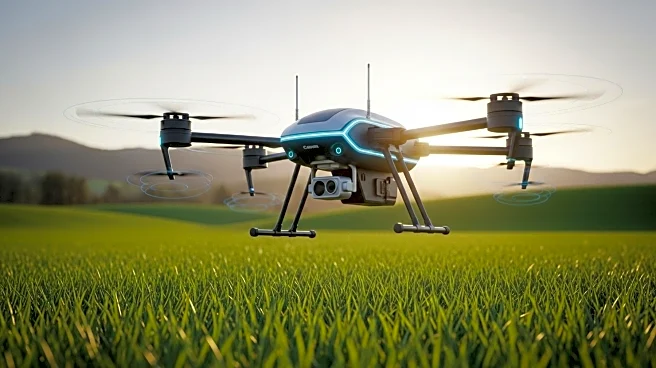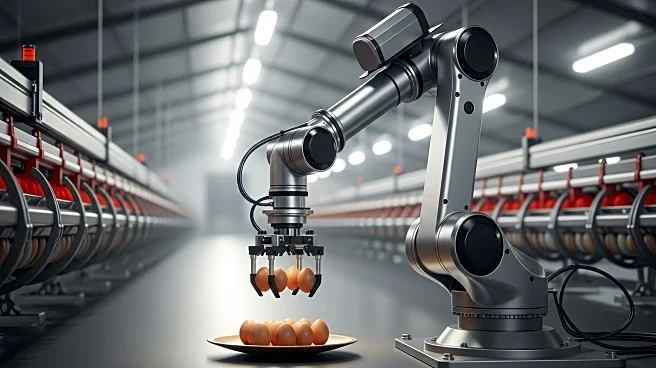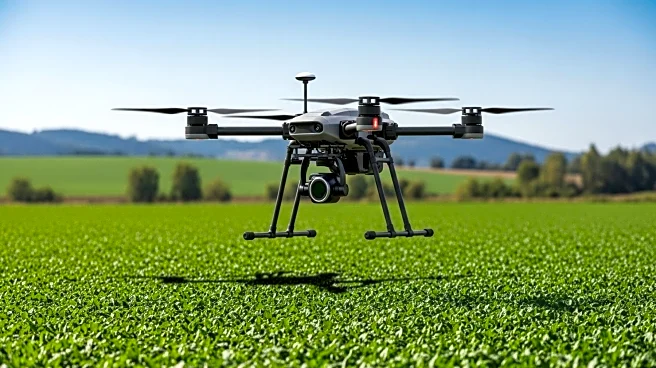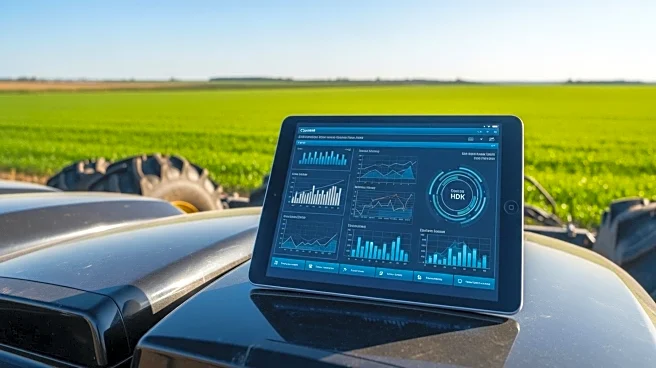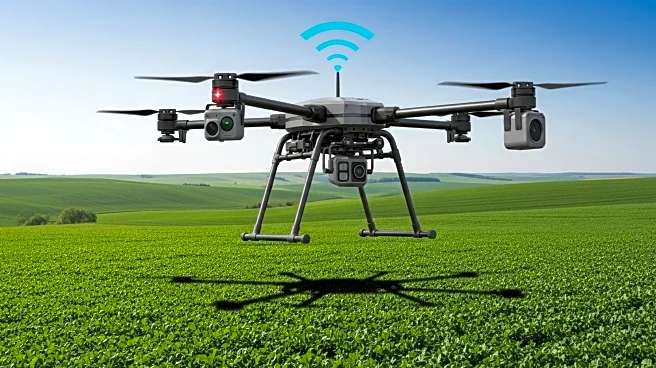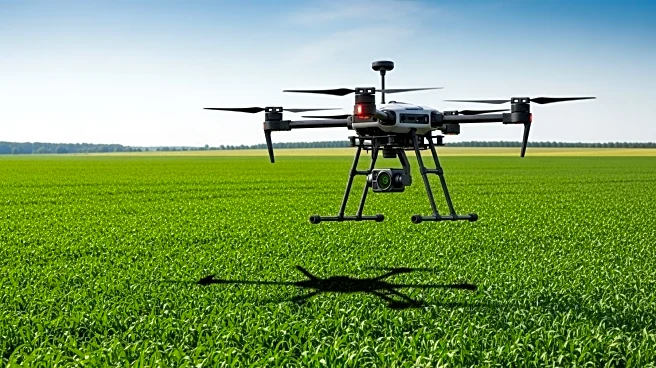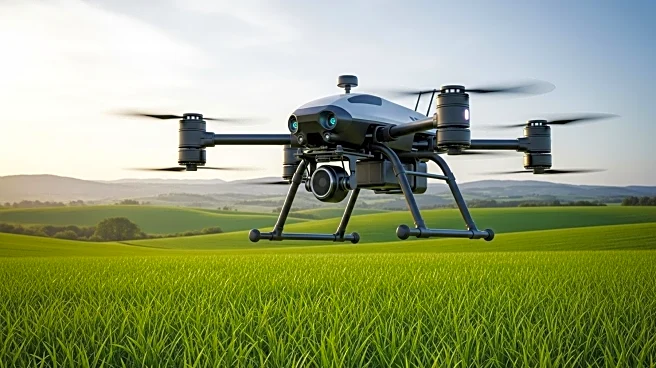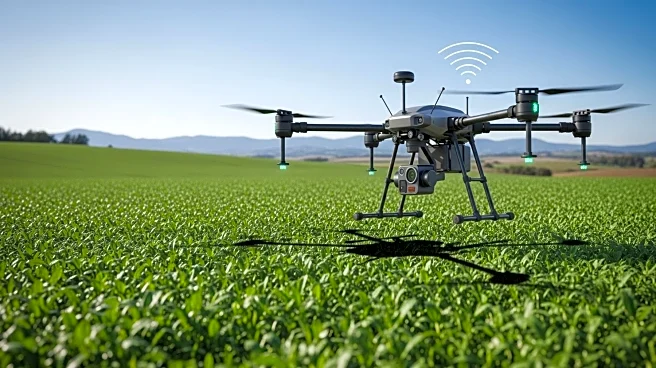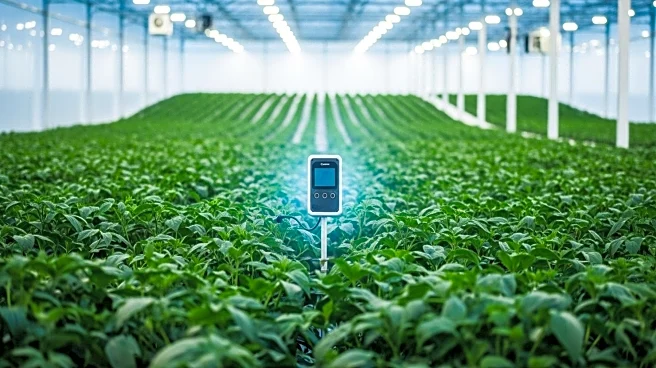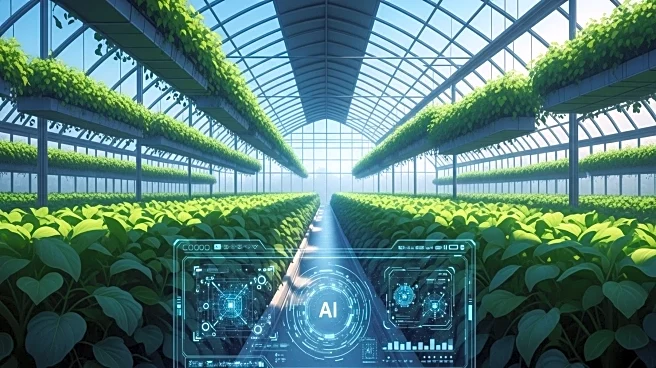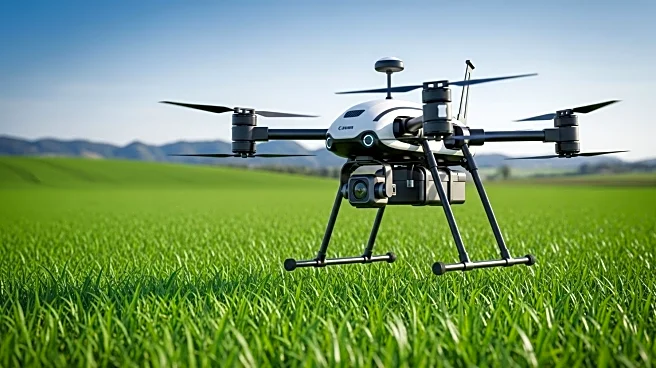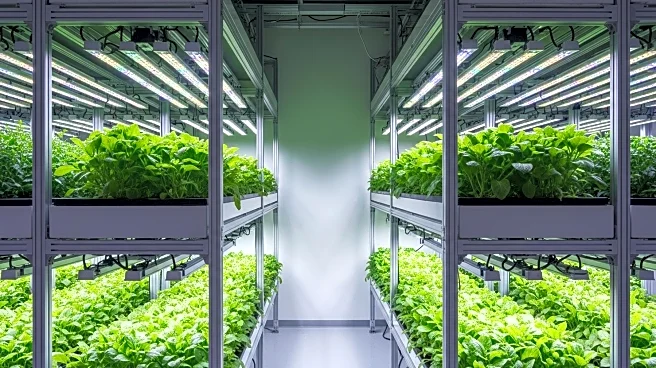What is the story about?
What's Happening?
The AI in Agriculture Market is experiencing significant growth, with projections indicating a rise from $2,567.54 million in 2024 to $15,901.36 million by 2032, reflecting a compound annual growth rate (CAGR) of 25.60%. This market expansion is driven by the adoption of artificial intelligence technologies in farming and agribusiness, aimed at enhancing productivity, efficiency, and sustainability. Key AI-driven solutions include precision farming, crop monitoring, predictive analytics, automated machinery, and disease detection. Recent developments in the United States include the launch of an AI-powered crop monitoring system by a Midwest startup, a university partnership deploying autonomous drones for precision pesticide application, and new investments in AI-driven farm management platforms. These advancements are part of a broader trend towards optimized resource utilization, improved yield quality, and reduced operational costs in the agricultural sector.
Why It's Important?
The integration of AI in agriculture holds significant implications for the U.S. agricultural industry, potentially revolutionizing crop production and efficiency. By leveraging AI technologies, farmers and agribusinesses can achieve more precise resource management, leading to higher yields and lower costs. This technological shift is crucial for addressing challenges such as labor shortages, climate change impacts, and the need for sustainable farming practices. Key players like Microsoft, IBM, and Granular Inc. are at the forefront of this transformation, providing innovative solutions that could redefine agricultural practices. The economic impact is substantial, with the potential to enhance the competitiveness of U.S. agriculture on a global scale, ensuring food security and supporting rural economies.
What's Next?
As the AI in Agriculture Market continues to grow, further advancements and investments are expected in AI technologies tailored for farming. Stakeholders, including technology firms, agribusinesses, and policymakers, are likely to focus on expanding AI applications to cover more aspects of agricultural operations. This includes scaling predictive analytics for irrigation and fertilizer use, deploying AI-guided machinery for various farming tasks, and enhancing data-driven decision-making processes. The ongoing collaboration between tech companies and agricultural institutions will be crucial in driving innovation and adoption. Additionally, regulatory frameworks may evolve to support the integration of AI in agriculture, ensuring ethical and sustainable practices.
Beyond the Headlines
The rise of AI in agriculture also raises important ethical and cultural considerations. The increased reliance on technology may lead to concerns about data privacy, the digital divide between large and small-scale farmers, and the potential loss of traditional farming knowledge. Moreover, the shift towards AI-driven agriculture could impact employment patterns in rural areas, necessitating workforce retraining and education initiatives. Long-term, the successful integration of AI in agriculture could contribute to global efforts in combating climate change by promoting sustainable farming practices and reducing the environmental footprint of agricultural activities.
AI Generated Content
Do you find this article useful?
